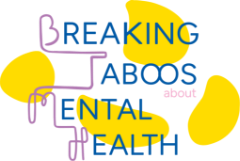In an era marked by an increasing awareness of mental health issues, youth find themselves at a crossroads, torn between the desire to speak up and the fear of being stigmatised. Stigmatisation, with its roots deeply embedded in prejudice and misunderstanding, continues to be a major barrier to expressing and seeking help for mental disorders. This article aims to explore the various facets of this issue and to propose solutions for promoting a more compassionate and inclusive approach.
Understanding the Issue
Mental health disorders among youth are not an isolated phenomenon; they represent a global concern. According to the World Health Organization, about 20% of children and adolescents worldwide suffer from mental disorders, with potentially devastating consequences on their development, education, and ability to lead a fulfilling life. Depression, anxiety and behavioural disorders are among the most frequently diagnosed disorders, each presenting unique challenges in terms of recognition and intervention.
Barriers to assistance
The path towards the recognition and acceptance of help is fraught with obstacles, mainly due to negative stereotypes and a general lack of understanding about mental health. The fear of judgement by peers, the fear of family or social rejection, and the shame associated with mental disorders deter many young people from openly discussing their experiences. This reluctance is exacerbated by often inaccurate and stigmatising portrayals of mental illness in the media and popular culture, which fuels a cycle of silence and isolation.
Solutions and approaches
To break the cycle of stigma, it is imperative to adopt a multidimensional approach focused on education, support, and the empowerment of youth. Here are some concrete steps:
- Education and awareness: Incorporate mental health education programs into school curriculums to equip young people with the necessary knowledge to understand and manage their own mental health, and to develop empathy towards others.
- Promotion of positive role models: Highlight success stories and recovery journeys to show that mental illness can be successfully managed, and that seeking help is a sign of strength.
- Community support: Encourage the creation of mental health clubs in schools and universities to offer a safe sharing space, under the supervision of trained professionals.
- Access to quality resources: Improve access to youth-appropriate mental health services, including helplines, wellness apps, and online therapies, to offer accessible and anonymous support.
Towards a stigma-free future
Fighting the stigma of mental health among youth is a collective responsibility that requires the commitment of all societal actors: educators, health professionals, parents, and especially, the youth themselves. By fostering an environment where vulnerability is recognised as an intrinsic part of the human experience, we can all contribute to a future where mental health is approached with the same openness and seriousness as physical health.
References
UNICEF. (2023, 14 november). Adolescent mental health statistics – UNICEF DATA. UNICEF DATA. https://data.unicef.org/topic/child-health/mental-health/#:~:text=Mental%20health%20conditions%20constitute%20a,girls)%20boys%20and%20girls%20globally.
Willibald Zeck, Joanna Lai, UNICEF, Stellenbosch University, De Carvalho Eriksson, C., Banati, P., Basu, R., Carvajal, L., Ferencic, N., Hijazi, Z., Kitamura, T., Mariano, L., Prabhu, S. M., Trossero, A., Levy, M., & Sanchita Jain. (2020). Adolescent mental health matters (S. Skeen, M. Marlow, O. Akin-Olugbade, T. Jain, A. Cui, & P. Vyas, Reds.). https://www.unicef.org/media/82926/file/Adolescent-Mental-Health-Matters-Report-Final-July2020.pdf
World Health Organization: WHO. (2022, 8 juni). Mental disorders. https://www.who.int/news-room/fact-sheets/detail/mental-disorders

